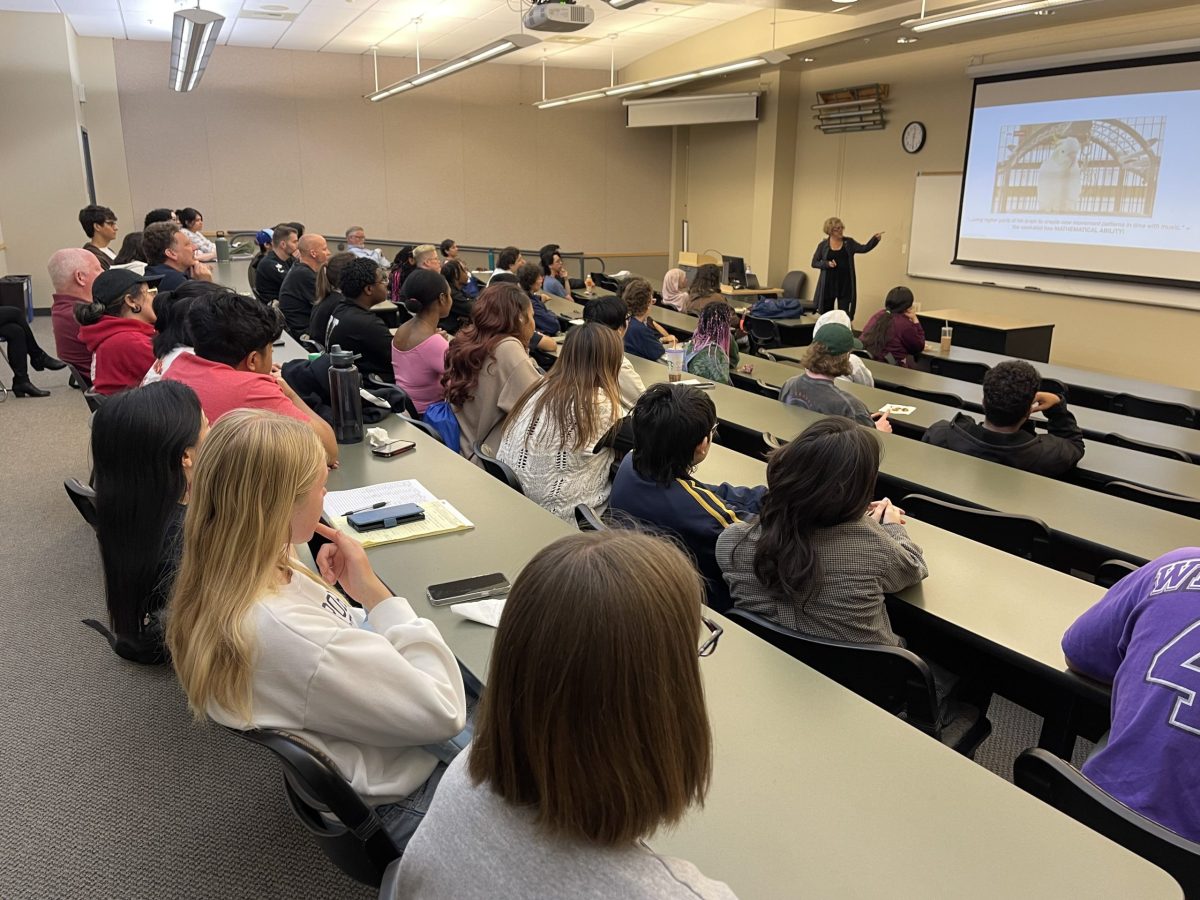A San Francisco Bay Area performer, educator and scientist spoke about correlations between the brain and music at the Math Talk Speaker Series during Math Awareness Week in the Learning Resource Center on April 25.
Heidi Moss-Erickson, wife of Cosumnes River College music professor Kurt Erickson, presented a slideshow of videos, pictures and songs, defining music in a mathematical framework to roughly 50 students. She used a program on her computer to display the similarities of different instruments playing the same note.
“When you say you like to listen to music or music makes you feel good, there’s something in your brain that recognizes patterns,” Moss-Erickson said. “If you hear the chorus of a song or the bridge, all of those things are patterns that you experience that give you different feelings.”
Moss-Erickson said music can reinforce parts of the brain used for math, explaining why musicians are usually better at math. She said historical mathematicians often used music to show examples of proportions and relationships.
Song is a precursor to music and language, Moss-Erickson said. Babies can sing and chimpanzees have the same biological mechanisms, but they cannot sing. She said a human’s DNA is 99% of a chimpanzee and while chimps can play ping-pong, their brain structure prevents them from singing or talking.
Khani Velazquez, an 18-year-old mechanical engineering major, said he has always been interested in both math and music. He said he is the only member of the choir at CRC who is not a music major in some way.
“Coming here, it definitely surprised me to know that there were minute differences in each frequency between instruments and between pitches and everything that really composes and makes up music,” Velazquez said.
Velazquez said he is going to listen to certain songs while memorizing formulas because of what he learned about pattern recognition. He said he currently studies while listening to music and never thought it would actually be beneficial, but now knows how to maximize his efficiency through patterns.
“I was really interested in learning the difference between the brain and the mechanism because I’ve never really thought about why chimpanzees can’t sing,” said 21-year-old bioengineering major Sydney Rivera. “I’ve seen them solve problems really quickly, like those computers, I’ve seen all those videos showing how smart they are, but I didn’t realize that even though they have the mechanism to be able to sing, they don’t have the brain power.”
Rivera said her interest in the event stemmed from the combination of biology and the mechanisms mammals use to vocalize such as the mouth, tongue and throat. She said she has heard about similar studies before and takes color coordinated notes while listening to a specific playlist in order to remember the material better.
Glenn Lewis, a 60-year-old studio art and art history major who teaches at Newsongs School of Music in Elk Grove, said he was interested in the evolution between the bird brain and the chimpanzee brain, displaying how some mammals have the ability to vocalize.
“Some of the things we learn today, I’ll actually apply that math as I work that math with the rhythms and students,” Lewis said.
Lewis said he was surprised about the connections and now knows more about vocalization, reinforcing some theories he already knew, such as the golden ratio.
Moss-Erickson demonstrated the golden ratio through a visual such as the Fibonacci sequence, which closely resembles the bass clef symbol on a sheet of music.
“My passion is to sort of enlighten artists about science and scientists about art,” Moss-Erickson said. “And how really uncoupleable they are and you’ll see that in the evolution story.”

